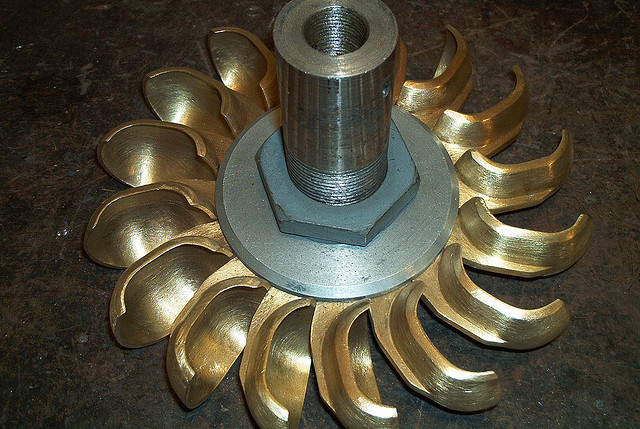Back to Basics: Direct Hydropower
Posted by Big Gav in microhydro
The Oil Drum has a post by Kris de Decker, founder and writer at Low-tech Magazine, on "direct use" of micro hydro power - Back to Basics: Direct Hydropower.
All hydropower plants today produce electricity. Transforming energy to electricity seems to be the only way to harness water power, but it is not. For almost two thousand years, water wheels powered machines directly via mechanical transmission.Some small direct hydro powered systems in South America present a strong case for combining the use of modern materials with old fashioned methods of water power mechanization. The higher efficiency of this approach means that less water is needed to produce a given amount of energy. This lowers the cost of hydropower and enables power to be produced by the use of very small streams. ...
In spite of these significant improvements, hydropower installations today are actually less efficient than those from earlier centuries. The culprit is electricity. Not long after the introduction of the water turbine, another change occured: Instead of using water-powered prime movers to run machinery directly (as had been the case for centuries), water turbines were (and still are) used to generate electricity. This modern approach has introduced an energy deficit that has nullified any progress behind hydropower design efficiency.
In a modern hydropower installation, a water turbine converts the energy in the moving water into rotational energy at its shaft, which is then converted into electrical energy by the generator that is coupled to the turbine. Next, the electrical energy is converted back into rotational energy by the electric motor of the machine that is being powered. Every energy conversion introduces energy loss. This loss of energy occurs due to friction, which is observable as heat, vibration and noise. Friction occurs at all levels of electrical transmission: In the turbine, the generator, and the motor. Additional components such as batteries, drive systems and inverters can further increase efficiency losses. ...
This means that a small, modern hydropower plant has a similar efficiency rating to a centuries old configuration using a wooden vertical overshot water wheel (50-60%), and that this modern counterpart is considerably less efficient than the iron water wheels of the 18th century (65-85%). In an old fashioned hydropower installation, there was only one conversion of energy; A water wheel converted the energy inherent to the water source into rotational energy at its shaft. The same shaft also moved the machinery, so that the only source of significant energy loss occured in the water wheel itself.






